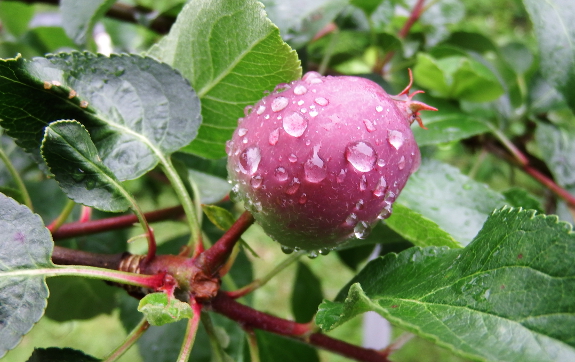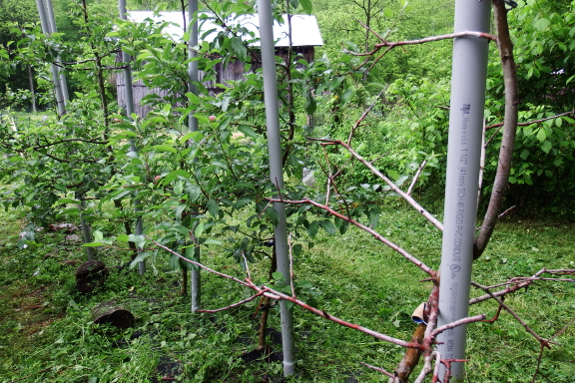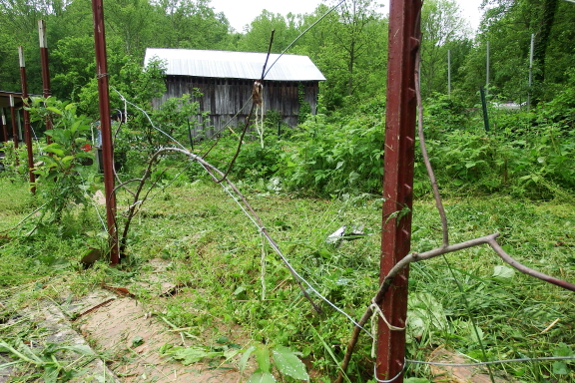
Fruit tree autopsy

I've been spending a lot of time ogling my apple trees, watching the unexpected fruit swell under the summer sun. But everything isn't rosy in the mini-orchard.....

We had three tree deaths
this winter, all individuals who simply failed to leaf out as planned
when the cold weather broke. It's tempting to blame the losses on
variety. The specimen above (Pristine), for example, barely grew last
summer due to a terrible case of cedar-apple rust...even though its fellows just showed a few spotted leaves then shrugged off the fungal disease.

However, I'm now feeling
like the ultimate deciding factor in who thrived and who perished was
location. The two trees shown above, like the one in the previous photo,
are the individuals closest to our north-facing hillside. And they just
happen to be the only trees who perished among all eleven of the 2014
graftees. Hmmm.... I guess that permafreeze, high shade zone just isn't
fruit-tree friendly. Good to know, and good to learn on home-grafted trees that cost us no more than a buck apiece.
Want more in-depth information? Browse through our books.
Or explore more posts by date or by subject.
About us: Anna Hess and Mark Hamilton spent over a decade living self-sufficiently in the mountains of Virginia before moving north to start over from scratch in the foothills of Ohio. They've experimented with permaculture, no-till gardening, trailersteading, home-based microbusinesses and much more, writing about their adventures in both blogs and books.
Want to be notified when new comments are posted on this page? Click on the RSS button after you add a comment to subscribe to the comment feed, or simply check the box beside "email replies to me" while writing your comment.

I'm curious as to how you have your orchard set up. Are you espaliering your fruit trees? Why do you have them growing around what appears to be 4" gray PVC pipe?
As for cedar apple rust (CAR) - oy! - the bane of my existence. I did download your chart from the Arkansas Extension Service and picked the Delicious variety to try since it is supposed to be "very resistant" to CAR. Then a neighbor advised that he had both golden and red Delicious trees and one of them (don't remember which) was filled with CAR while the other shrugged it off. Maybe it has to do with micro-climate?
Lucy --- Good call!
NaYan --- We are espaliering some of our trees, but the ones with pipes are our high-density apples. Dwarf trees trained to a tall spindle shape tend to need staking to prevent the trees from bending down during heavy fruit loads.
I agree that location has a big impact on fungal diseases. More sun = drier plants = fewer fungi!